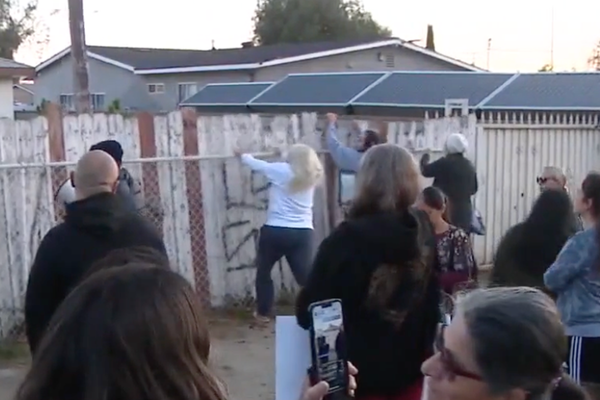
Ten years is a long time, especially when it’s how long fans have had to wait for answers to one of the biggest twists in video game history. The end of Dragon Age: Inquisition changed everything players knew, revealing the party member Solas to actually be an elven god, called the Dread Wolf, who’s deceived you the whole time. It was a mind-blowing reveal, made even more gut-wrenching if you chose to romance Solas.
Of course, the Dread Wolf plays a central role in the latest entry Dragon Age: The Veilguard, and anyone who knows Inquisition will be immediately familiar with him. But Game director Corrine Busche notes that if you choose that your Inquisitor romanced Solas, things might play out a bit differently.
“Solas is a big part of this narrative, and in your discussions with the Inquisitor you'll have to face some of those questions about the nature of that romance,” game director Busche tells Inverse, “I will tell you at the end of the Trespasser expansion for Inquisition, as someone who romanced Solas, I just bawled my eyes out. I’m looking forward to players that really share that perspective to see how this plays out.”
Solas is a prime example of how Veilguard uses the legacy of Dragon Age to create something wildly different and new. It’s a bold step forward for the franchise, with a renewed focus on both action and storytelling. Ahead of Veilguard’s release in October, Inverse talked to Busche and producer Jen Cheverie Cott, diving deep into the big changes coming to Dragon Age – from the mission-based structure and exploration, to the emphasis on player expression and romance.
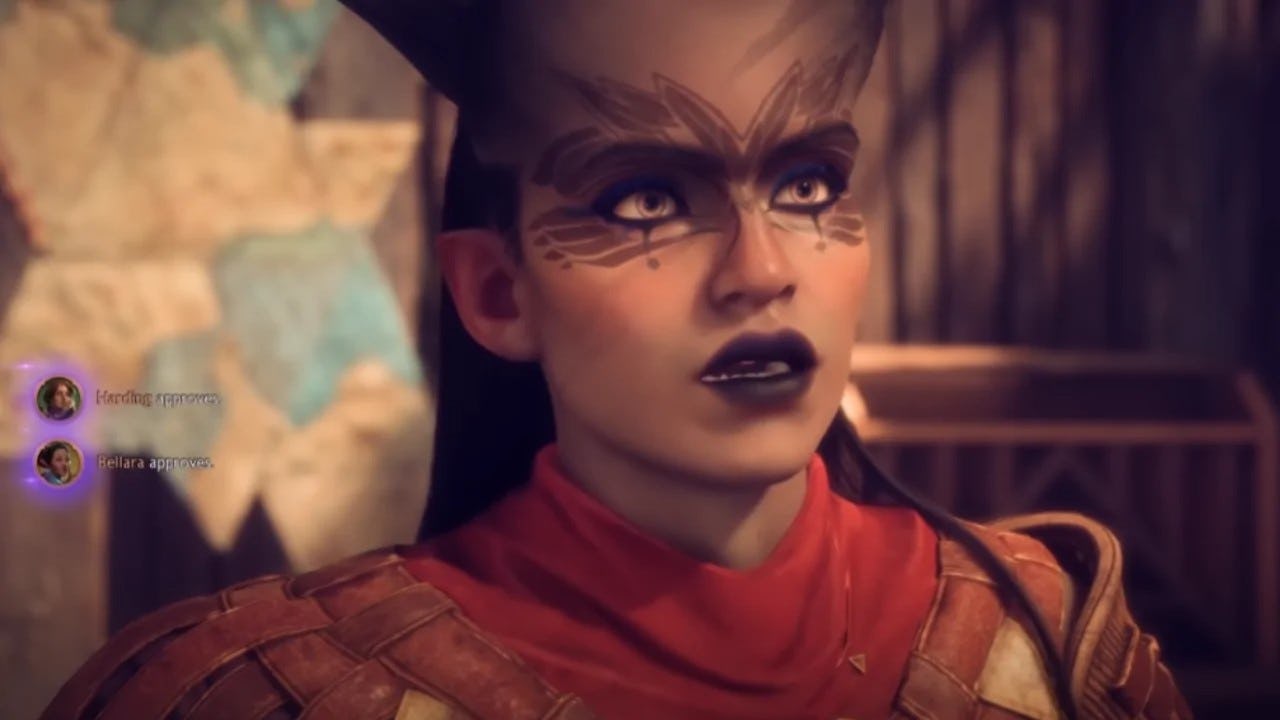
Dragon Age fans are often very invested in their characters. With that in mind, how important was the character creator to Veilguard, and how much time did you spend fine-tuning it?
Busche: It's a very in-depth character creator and we're really proud of what's on offer there, especially giving players more control over things like adjusting their body type, or really seeing yourself in it.
Our first design pillar on the game is to be who we want to be. We want everyone to feel welcome and feel like if they choose to, they can recreate themselves to a degree inside of a character creator. So the focus on hair that is more representative, in larger varieties.
Skin tone was also a really big focus for us. We absolutely knew that we wanted to invest in that technology so that it was authentic, that skin tones of all types show up in all lighting conditions. Really, so that when you play, you can feel this is a game where you belong.
Cott: Our technology is catching up with our aspirations for being able to provide things for the player to be able to customize themselves. Hair is a really wonderful example of that. We have tons of different hairstyles, it moves with physics and has texture.
Busche: Can we just talk about makeup? I'm always hoping for great makeup in character creators.
Cott: Yeah, the first Warrior I made after we got our character creator up and running was just this beautiful peacock blue and purple glitter, so I can blind my enemies while I’m playing.
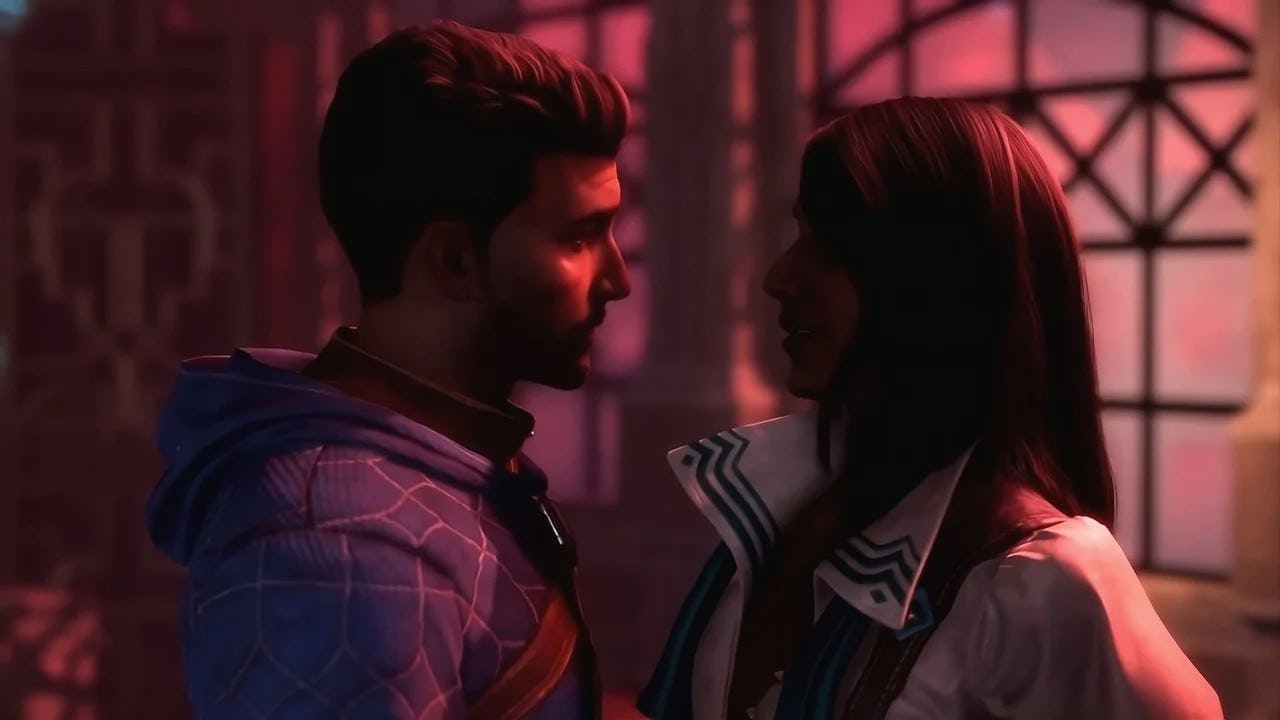
Romance has always been a vital aspect of Dragon Age, and there's been a lot of discussion lately around romance in video games at large and how it can feel too “gameify.” How are you trying to avoid that with Veilguard?
Busche: This is very near and dear to my heart. Let me first say that when it comes to designing romance systems, I will never say that there is one right answer for how to approach it. It is the most complicated aspect of human nature, and then trying to approximate that in these virtual worlds is always a challenge.
The way we wanted to approach it, we knew that we wanted players to be able to go out into this world, find the companions that really resonated with them, and build up these either platonic or romantic relationships. But we put a lot of effort and mindfulness in the distinction between “playersexual” and pansexual. So all of our companions are pan – they prefer men, women, non binary, people.
The main difference there is that in a playersexual system, the companions change their personality. They change who they are to adapt to you, the player. You're not going to find that here, our companions refer to their past encounters. They're fully fleshed out and who you are as Rook, they will accept you, but it doesn't change who the companions are.
We also were very mindful about the touch points with romance throughout the game. If you want to be the initiator and every time you get a chance to flirt, you can kind of take on that role. If sometimes you want to test the waters, maybe flirt here or there. Well, at some point in the game, that companion might come back to you and go, am I misreading this? Is there something here? And then you, the player, have the chance to clarify and help shape that relationship together.
It's a very relatable, respectable take on how to handle the journey of romance.
I think we can agree that the Dragon Age fandom is, for lack of a better word, thirstier than other fans. What is it like developing a game, and companions, with that in mind?
Busche: Oh my goodness. We're here for it. We're right with them. I will tell you, it gets awkward sometimes very early when we saw the initial poses for the more intimate romance scenes. I flushed a little. As people on the team, it’s like “Hey, we're gonna see some things here, so be careful.” It is often an awkward journey to get to the final product, but we're so here for it.
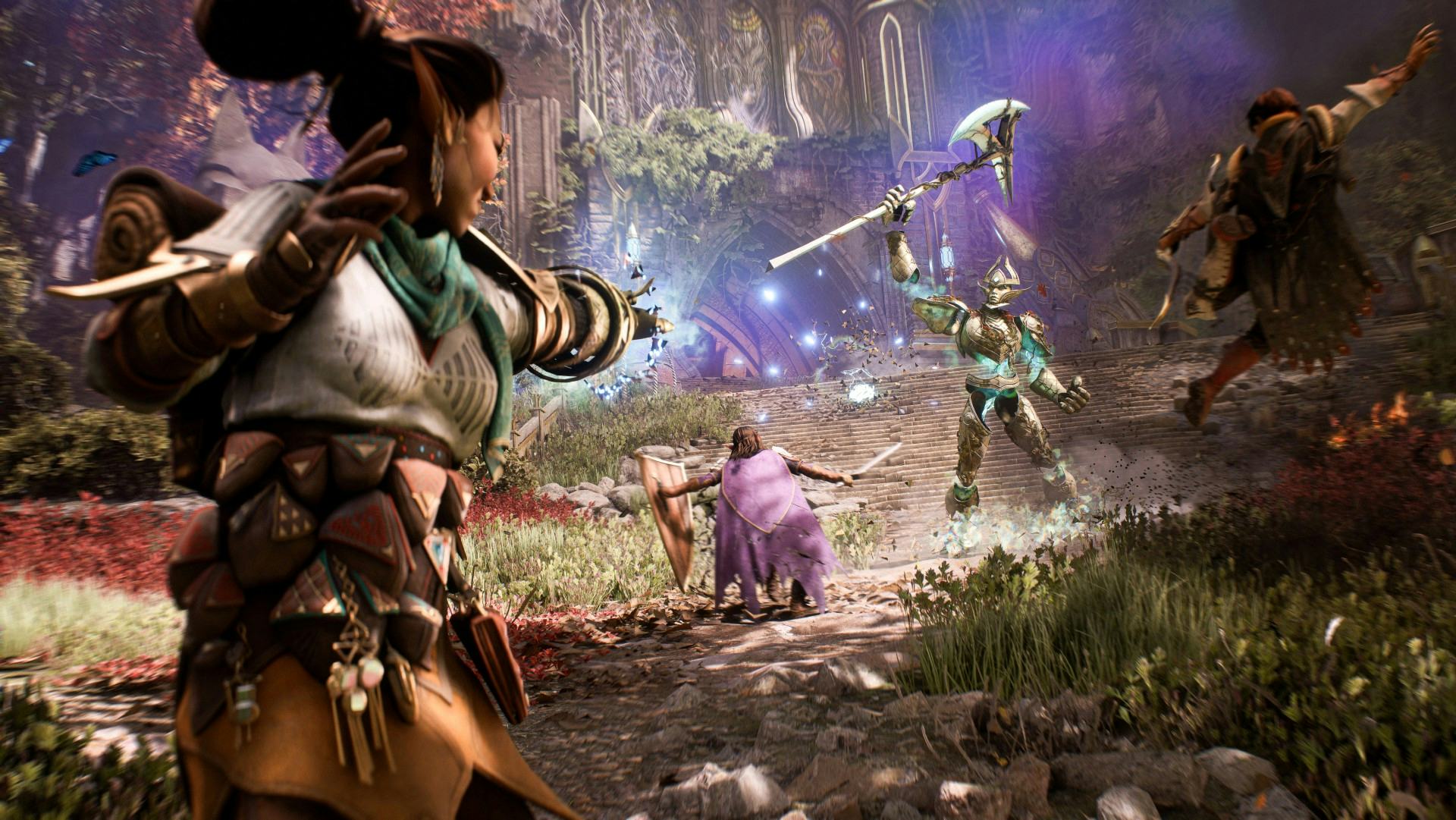
One of the defining characteristics of the Dragon Age is how the visual style changes from game to game. Can you tell me about the new style of Veilguard, and how that reinforces the themes you’re trying to convey?
Busche: Yes, you're absolutely right. Every single Dragon Age reinvents itself, and it's one of the greatest challenges, but also, I'd say, one of the biggest opportunities. Because we can innovate, we can push the boundaries, we can play with ideas.
So in this game, we knew we were going to Northern Thedas, and this is actually a really unique opportunity. These are storied locations that we've long talked about within the past games, but players have rarely actually visited. It's a different place. Magic flows more freely in these locations, whether you're talking about the city of Minrathous or the wild magic of Arlathan Forest that has a vibrancy – you're seeing the shimmer of magic rolling through the trees. You're seeing the people of Minrathous create magical signage in the way we might use electricity that, in and of itself, creates a vibrancy that you just don't see in the south of Thedas.
So when you say that visually, it represents the themes, the locations, the characters, it's very much true. I would also add, we have these vibrant highs in some of our biomes, that are counterbalanced by some of the darkest, grimmest lows that you're going to see in a Dragon Age game. We think that contrast is really healthy, because when you have that beautiful high-high, when things get really dark, that hits a little different.
Cott: The theme of the game, you take a look at those dark scary areas like Weisshaput, and you see these vibrant areas like Arlathan, which is one of my favorite spots. It’s beautiful, there’s movement and magic there, and it gives you an idea of what’s at stake. It makes you feel like you want to preserve that.
You’ve talked about Veilguard being more mission based, but exploration has always been an element of Dragon Age. How did you land on that structure, and how are you trying to integrate exploration?
Busche: When you do the main story beats, it's primarily mission based. It's very hand crafted, curated towards the narrative moments of intensity. It really unlocks our ability to tell that finely crafted story. However, these missions often take place in these expansive areas of the world that really open up and invite that player agency to explore, to create your own player directed goals, to uncover secrets, or find some of the toughest bosses in the game.
In fact, it's a really important part for those players who are looking to play at the highest difficulty tiers, going out and discovering these secrets – getting that gear is going to be pretty integral to your success.
Cott: That intentionality and the focus of those crafted missions for your followers, carry through to the quest and content you can find while exploring. It's hard to call it side content, because it's world building. You are doing things that are important to the characters in that world, and they're applicable to the story, and they're helping you discover more about it as you go through, and that's driving you out into those levels so that you can see more of them. You can find secrets and see how the greater picture is affecting that world.
Busche: I think back to the work the team has done on exploration. This is not fetch quest content, this is narratively salient. It contributes to understanding of the identity, the character of these locations and how they fit into the larger narrative. So even if you’re a story-driven player, you’re going to get value out of exploration.
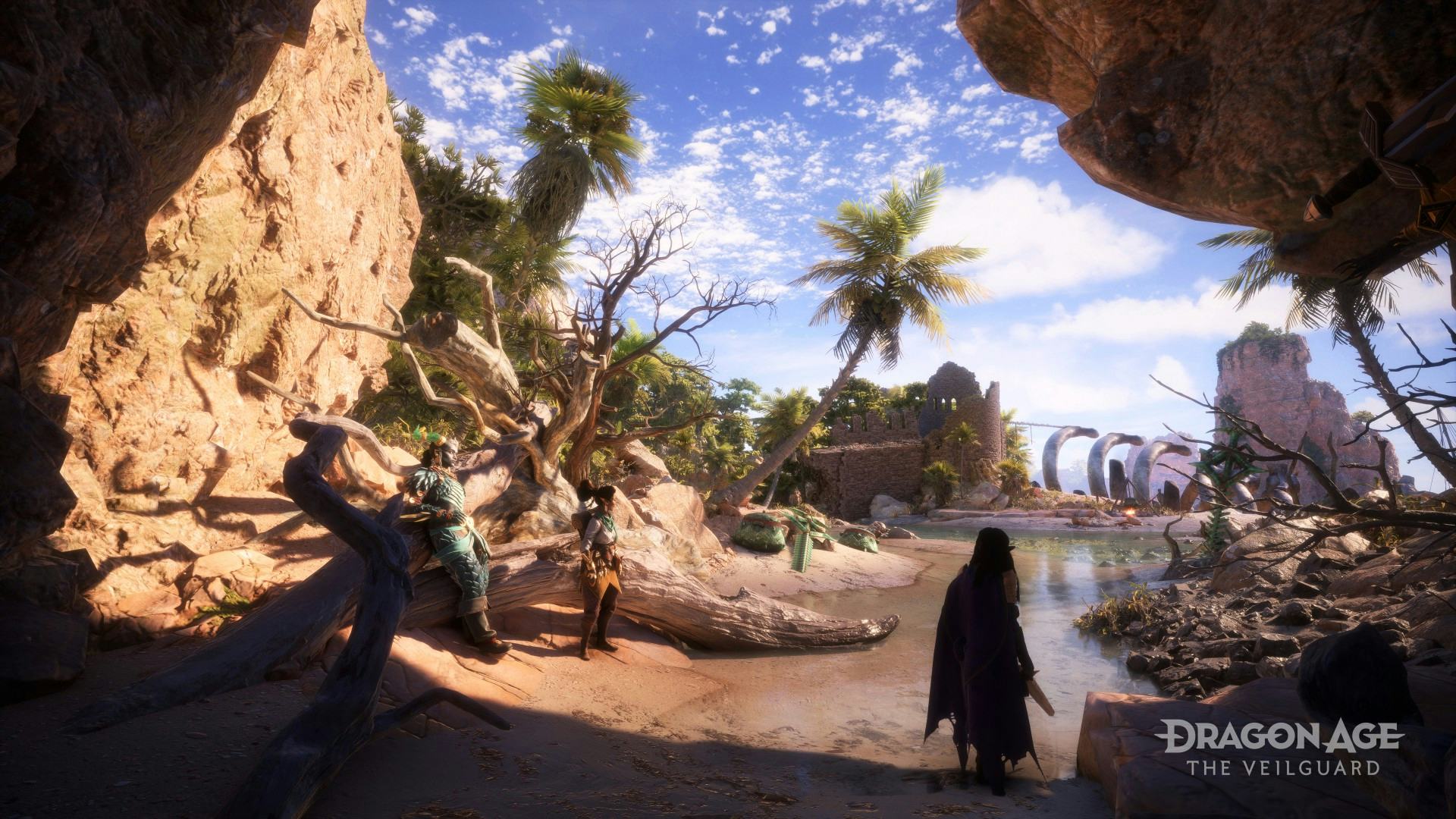
I have to ask about Solas, specifically how his moment of betrayal feels different if you’re in a romance with him in Inquisition. For anyone who romanced Solas, how will Veilguard feel different?
Busche: I don't want to spoil anything here. Of course, the Inquisitor does make an appearance and you can customize whether you had that romance or not. Solas is a big part of this narrative, and in your discussions with the Inquisitor, you'll have to face some of those questions about the nature of that romance.
I will tell you at the end of the Trespasser expansion for Inquisition, as someone from the romance Solas camp, I just bawled my eyes out. I’m looking forward to players who really share that perspective to see how this plays out.
Cott: What I love about Solas in Veilguard is that there are moments where I have doubted my stance on him going through the game. In the prologue, there’s that interaction between Solas and Varric, and you can see the slight softening in his eyes, and having the context of the previous games. It’s been very polarizing, even when I think I’ve fully formed my feelings on Solas.
Busche: It’s because he lives in that morally gray. A tale, told from his perspective, would be one of him being the hero. And that’s what makes it so compelling.
There was a recent interview with Edge where you talked about learning lessons from Anthem, and leaning into what BioWare does best. Extrapolating on that, as BioWare’s first new game in six years, what have you learned from Veilguard?
Busche: It's an easy answer: single player, deep, party-focused RPGs. I know the team takes a lot of pride in the fact that there is such singular focus on crafting the best, most complete RPG we can offer up to fans offline – no battle passes, no microtransactions, don’t have to link your EA account, Steam native. We want you to play this game and experience it for what it is in its complete form. That’s what we’re committing to in the future.
Cott: You can feel the energy from the team as we're going through and playing. Everybody's sharing their playthroughs, their different builds that they're making, and their choices, their romances. We're players too. I think that excitement and that feeling of we're making the right game, the right Dragon Age for us, I hope it's an indication that we are doing the right thing.
Dragon Age: The Veilguard launches on October 31 for PS5, Xbox Series X|S, and PC.

